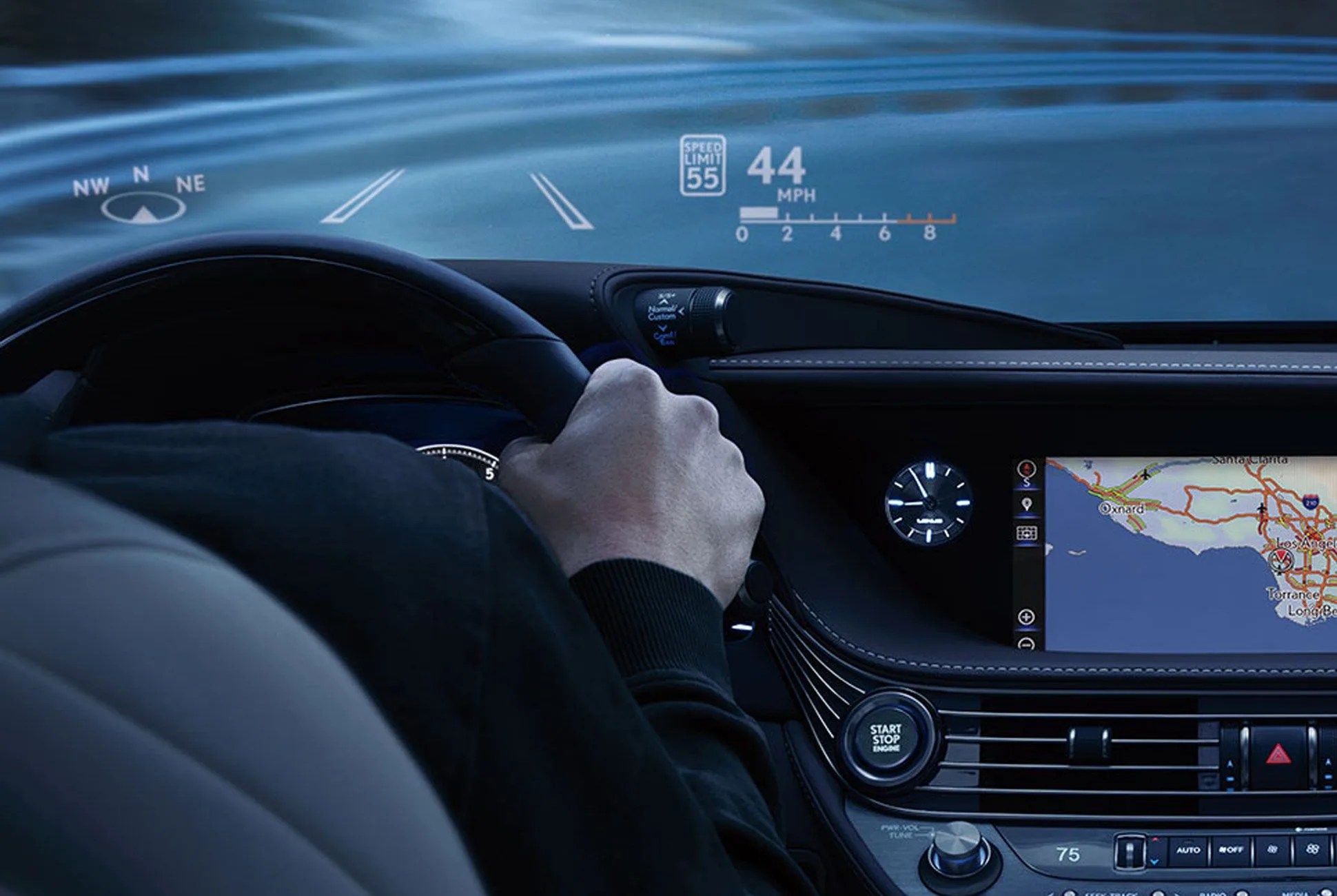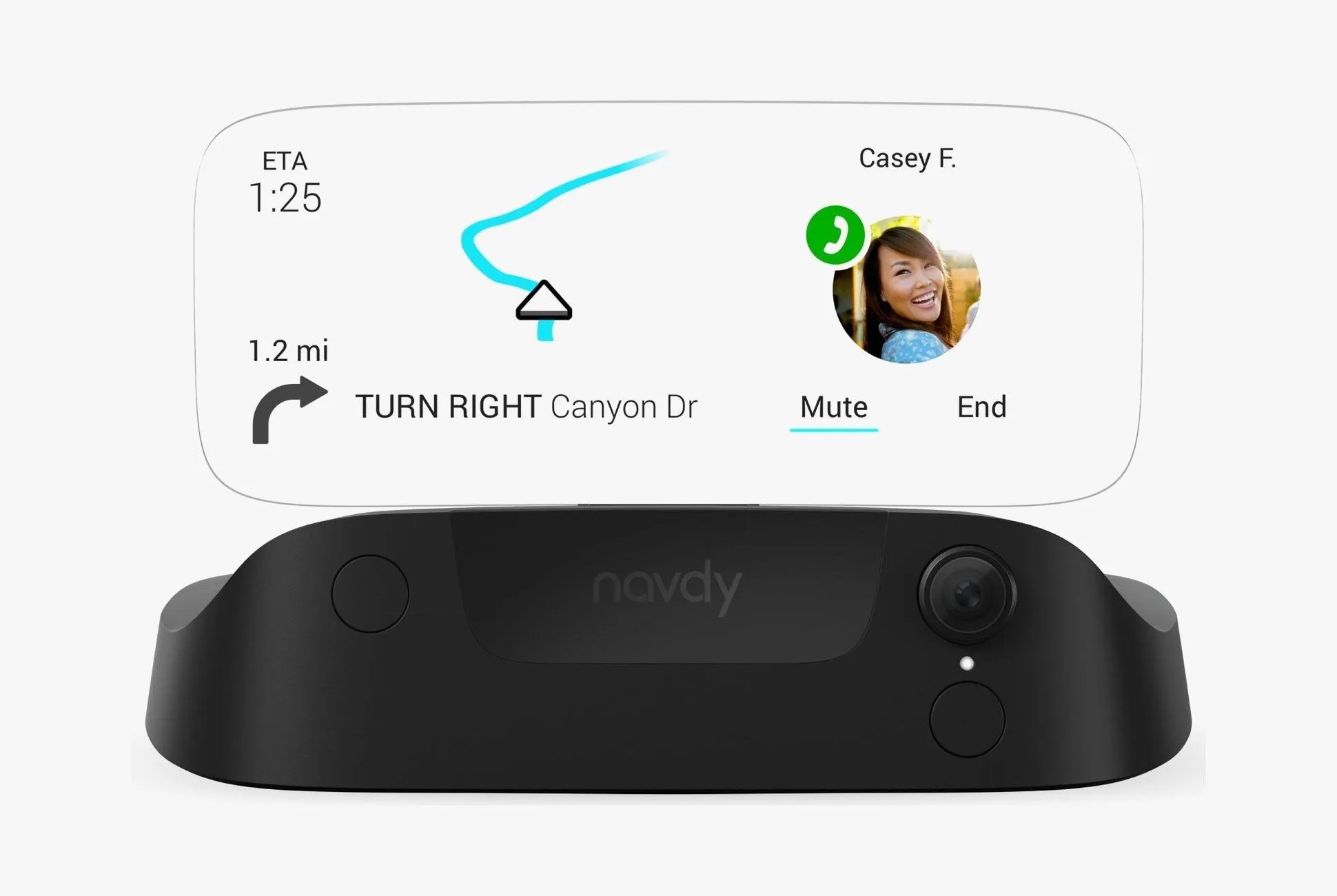3 photos
My first experience with a head-up display came in a Corvette, circa 2002. It was a small, simple, rectangular chunk of projected data that included RPM and speed. Its brightness was adjustable, and it was possible to scoot the display up or down and left or right. Even though that HUD was primitive, it worked — immediately, intuitively, helpfully. My eyes stayed forward — safety being the ultimate goal of automotive HUD systems, as they project crucial information where drivers are already looking — and all the intel I could need while rocketing down the road was right there, barely a glance away. It felt like a legit fighter-jet experience in that old ‘Vette.
Today’s HUDs, by and large, aren’t all that different from what appeared in the first iterations several automotive generations ago (the first consumer-grade HUDs appeared on 1988 GM cars), though they have certainly evolved. Resolutions are now higher, colors crisper, and displays brighter and larger. They mostly share the strategy of projecting graphics onto windshields from a display embedded behind the steering wheel in the dashboard, though some systems use small flat screens that stick out vertically from the dash just behind the image projector.
HUDs in Current Cars
Though HUD systems have historically been the purview of performance and luxury cars, they’re finally starting to trickle down to more affordable models: sedans like the Honda Accord and Mazda’s Mazda3, plus the MINI hatchback and Countryman and Toyota Prius. Usually, however, they’re mixed in with larger trim packages, rather than offered as an individual option. For instance, Honda only offers the HUD for the Accord in the top trim level, the Honda Accord Touring ($33,800), a package that includes a wide variety of other features like chrome trim, adaptive dampers and LED headlights. All of that adds up to a $3,000 price bump. Jaguar and Land Rover, on the other hand, do offer HUD as a stand-alone option, which, depending on the model, costs between $910 and $1,325.
Aftermarket Options
For those willing to deal with slightly clunkier options — and by “slightly clunkier” I actually mean “horrible visual warts on a smooth dashboard” — there are even aftermarket HUD systems. These units, like those from Garmin and Hudway, sit on the dash and utilize their own flip-up screens. A company called Navdy also offered an extremely slick aftermarket product for $500, with color graphics and a smartphone interface, but earlier in 2018 Navdy went out of business. Still, these dash-mounted units function well enough and are far more affordable than factory-installed systems. The Hudway model costs just $50 but it requires that a smartphone be physically inserted in the system as the projection tool, thereby removing it from convenient access. Garmin’s version is $150, but has its own projection and graphics system that accesses data from a smartphone via Bluetooth.
Three of Our Favorite Aftermarket HUDs
Glass Head-Up Display by Hudway $49
HUD by Garmin $150
Heads Up Display & GPS Navigation by Navdy (Discontinued; Info Only)
Most of the systems described above are fairly straightforward — they offer navigation, fuel or battery levels, speed and other data. But this fairly rudimentary capability belies the HUD’s overall importance. While the devices are increasingly becoming not only frequent options for most car manufacturers, they’re also providing a critical foundation for a key bit of next-gen automotive technology that’s presently in the pipeline: augmented reality.




